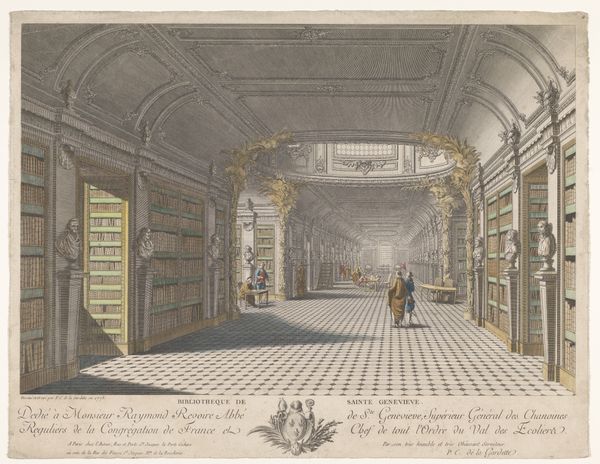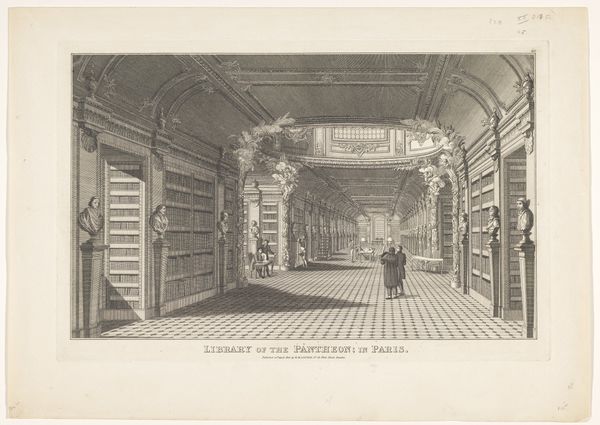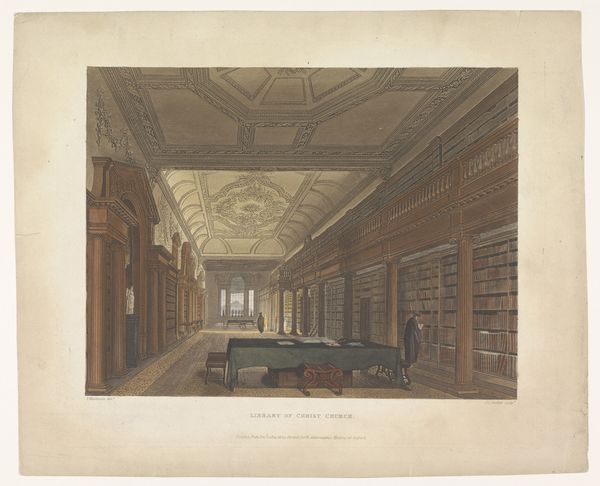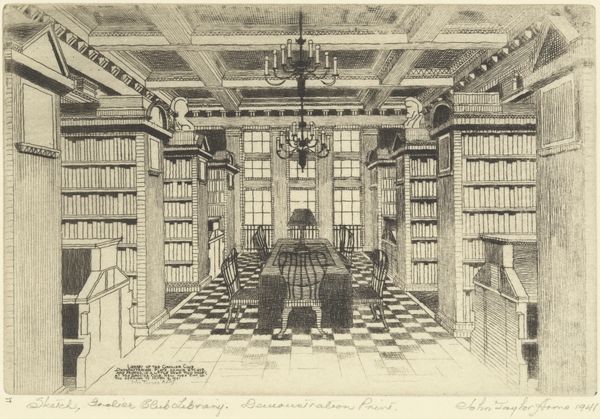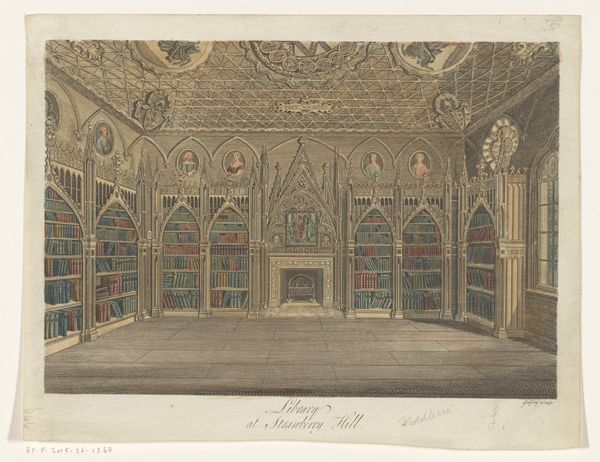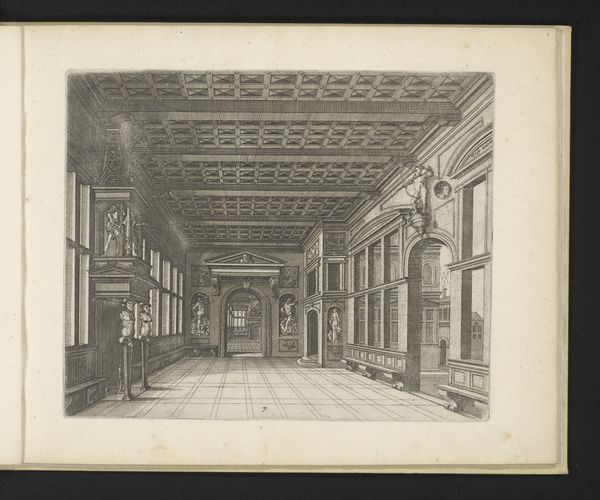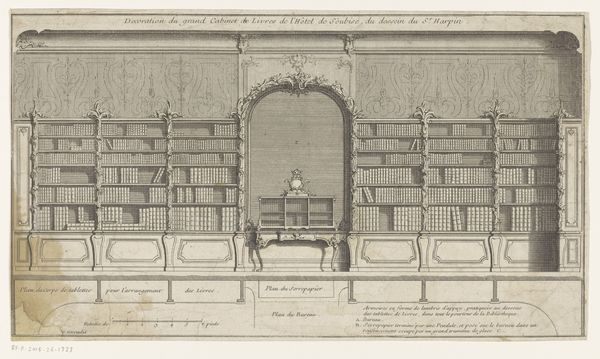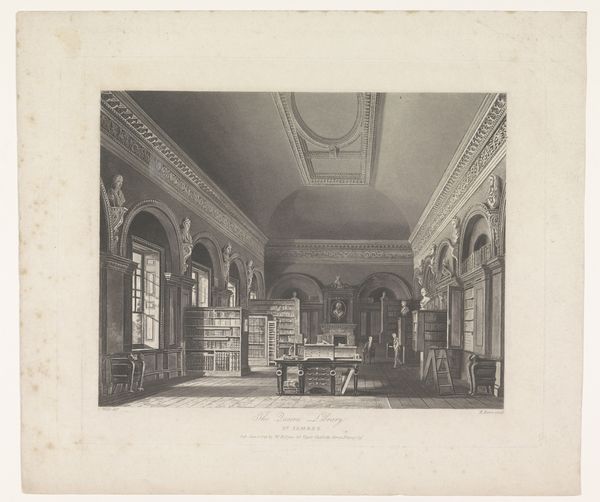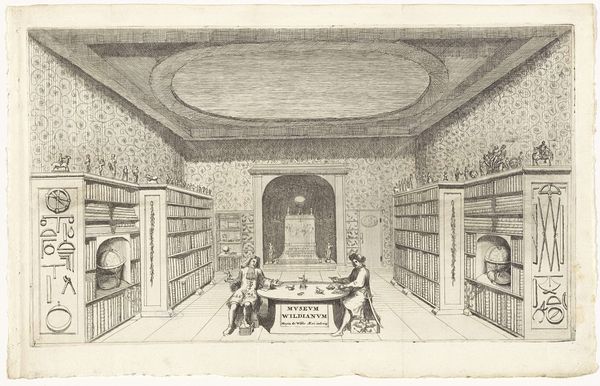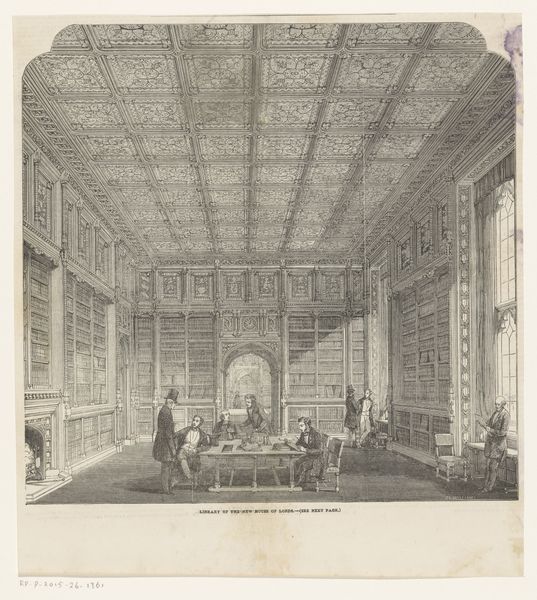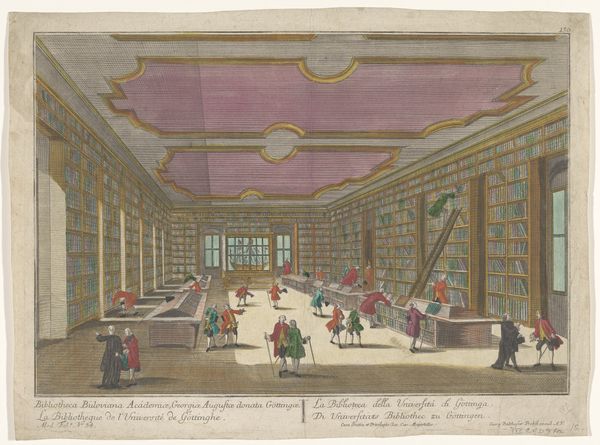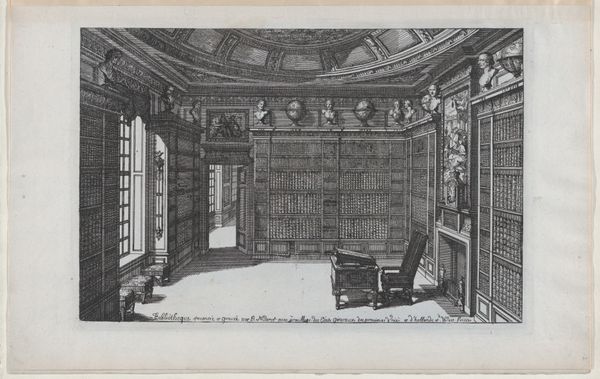
Bibliotheek van de abdij van Sainte-Geneviève te Parijs c. 1773 - 1825
0:00
0:00
print, engraving, architecture
#
neoclacissism
# print
#
perspective
#
19th century
#
line
#
cityscape
#
engraving
#
architecture
Dimensions: height 355 mm, width 458 mm
Copyright: Rijks Museum: Open Domain
Curator: This engraving, titled "Bibliotheek van de abdij van Sainte-Geneviève te Parijs," was created by Pierre Claude Delagardette, circa 1773-1825. It is currently housed here at the Rijksmuseum. Editor: Immediately, I'm struck by the linear perspective, how it emphasizes the sheer scale of the library. There's an almost overwhelming feeling of structured knowledge, replicated along the z-axis in books and busts! Curator: Yes, the architectural depiction is exemplary of Neoclassical ideals—emphasizing order and reason, values closely tied to the Enlightenment and access to knowledge as a tool for empowerment. Libraries served as crucial places for disseminating new and potentially radical political theories at this time. Editor: Absolutely. You can really see that sense of order in the checkered flooring too—it's an assertive visual grounding amidst all that textual abundance, providing structure to intellectual activity itself. And look at those repeated vertical lines formed by the stacks of books – each a material testament to labor and the social organization of knowledge production. Curator: Right, and beyond just seeing the library’s layout, consider the context of its existence in a former abbey. How does situating a public resource within what was once a religious space affect access and symbolic ownership? Was it a truly accessible space for all genders and social classes? Or were there still silent exclusions, unspoken power dynamics at play within the frame of revolutionary France? Editor: Those details you are mentioning bring to mind issues around material access; how would this shift in use really reshape how society valued and utilized this once holy space and its new bounty of secular texts? The cost of ink, paper, and binding - and access to the resources necessary to even get to the library itself - are also worth considering. Curator: Precisely. So, as we gaze at Delagardette’s print, we’re not only admiring his technique; we’re confronted with layers of political and social significance intertwined with architecture, knowledge, and access. It really prompts us to critically question who libraries were serving, and perhaps, even more significantly, who they excluded. Editor: Yes, examining not just the image, but also the conditions under which the space came into existence – labor, materials, and changing systems of belief – gives such depth and layers to what might appear at first a very formal, orderly representation.
Comments
No comments
Be the first to comment and join the conversation on the ultimate creative platform.
